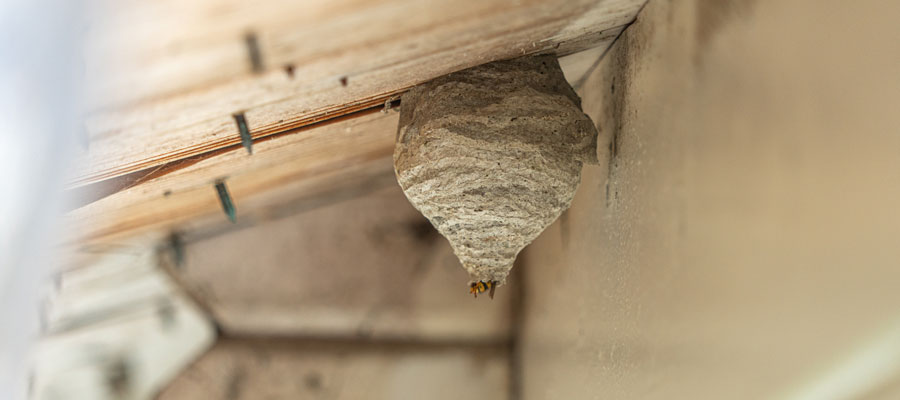Wasps are a common pest in the summer here in Central Iowa. Out in nature or in gardens, they’re a normal part of life. In fact, wasps are considered to be a very beneficial insect to our environment! However, they can quickly become a nuisance when they build their nests on or near your property. Certain wasp species become aggressive when it comes to defending their nest. Even worse, some are capable of stinging people repeatedly. For this reason, it’s best to avoid nests built nearby. However, it is nonetheless important to learn what different wasp nests look like. People assume they all build hives in trees—but that’s simply not true! The experts at Springer Professional Home Services are here to share their top tips for identifying different wasp nests we commonly see in the summertime.
Wasp Nests in Iowa
Wasps begin to build nests in the spring, but most are seen in the summertime as colonies grow in size. To best identify a wasp, it’s always smart to look at the characteristics of their nests!
- Paper wasp
- Look like upside-down umbrellas
- These nests are more open, with cells visible
- They are typically supported by a single stalk and made out of a papery substance
- Found beneath eaves of structures, in attics and wall voids, and in other enclosed areas
- Mud dauber
- Nests are built by female wasps only
- They are small and tubular in size, often looking like organ pipes.
- Typically found in cracks or crevices that are sheltered
- Often found under eaves, garages, attics, or on the sides of buildings

- Yellowjacket
- Consist of a papery material and have a single opening
- Interior can contain up to 100 tiers of cells
- Also nest underground, sometimes with thousands of members
- Otherwise build nests in hollow trees, under porches, and a number of other areas
- Bald-faced hornet
- Almost always at least three feet off the ground
- Consist of chewed wood fibers mixed with saliva
- Can grow to the size of a football or basketball
- Usually in trees, bushes, or wooded areas, but also can be on buildings
Safe & Quick Wasp Nest Removal
Wasp nests are more dangerous than you think. A small nest could contain hundreds of stinging insects that will not hesitate to sting when they feel threatened. If you notice a nest pop up on your property, always contact the stinging insect removal team at Springer. Our experts have the tools and experience needed to safely and quickly remove wasp nests from your property.

